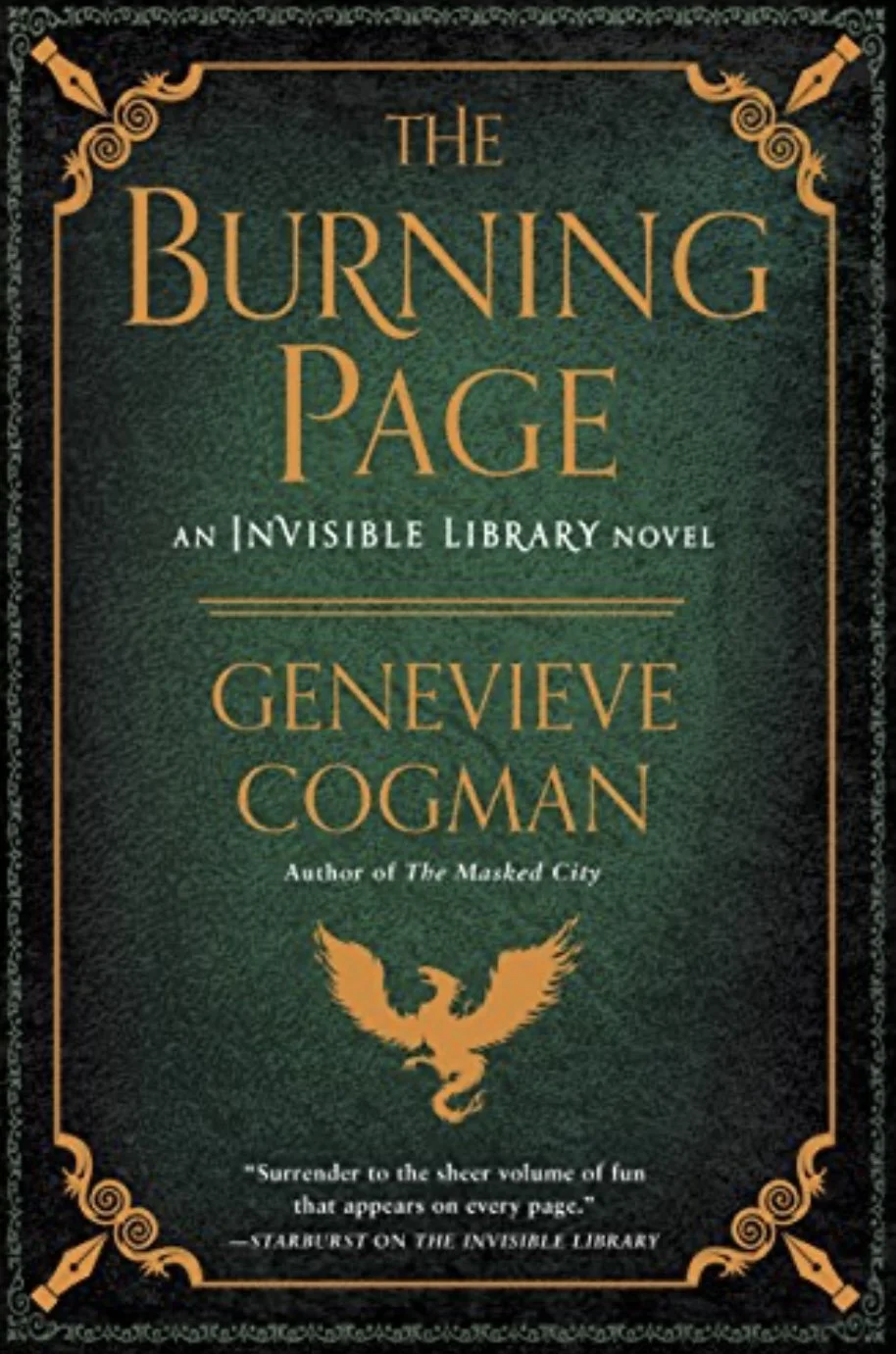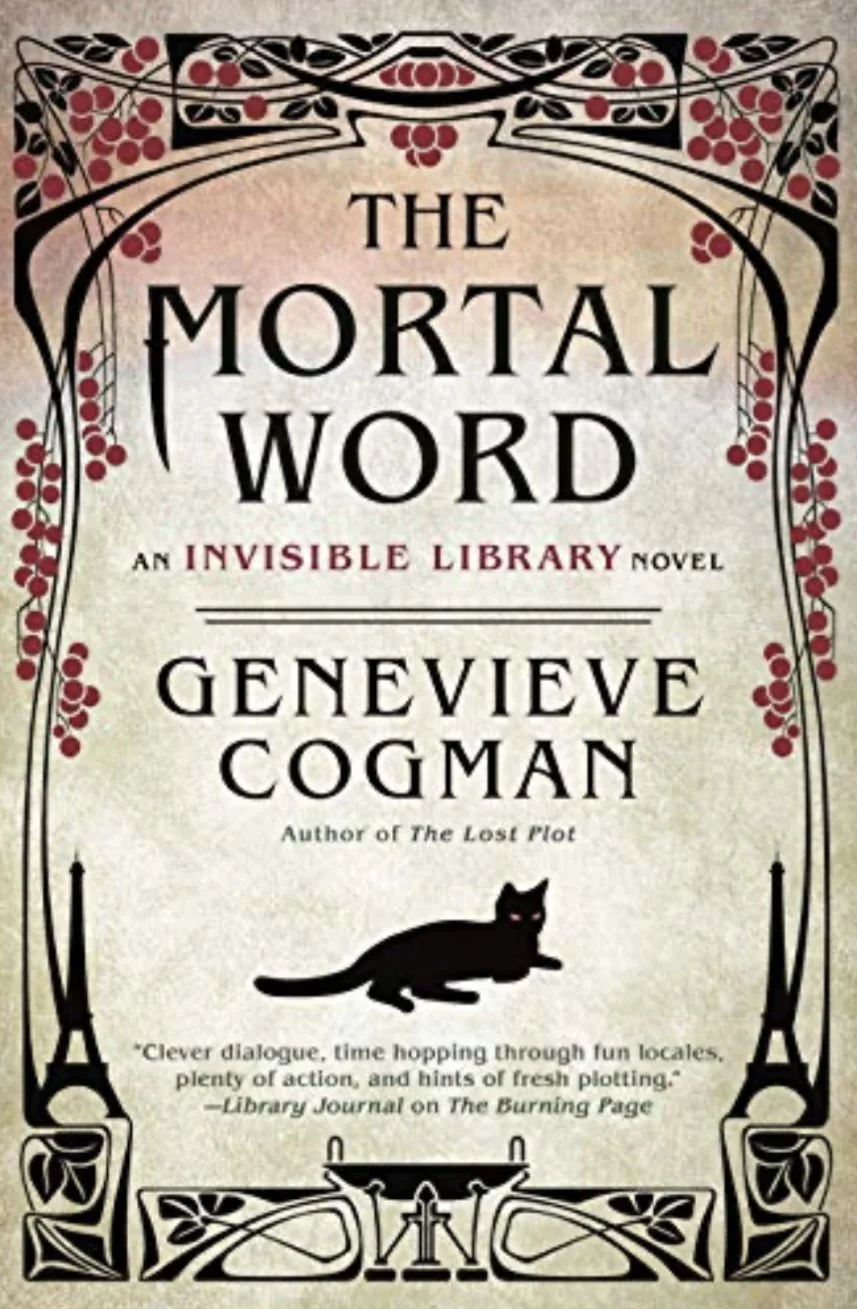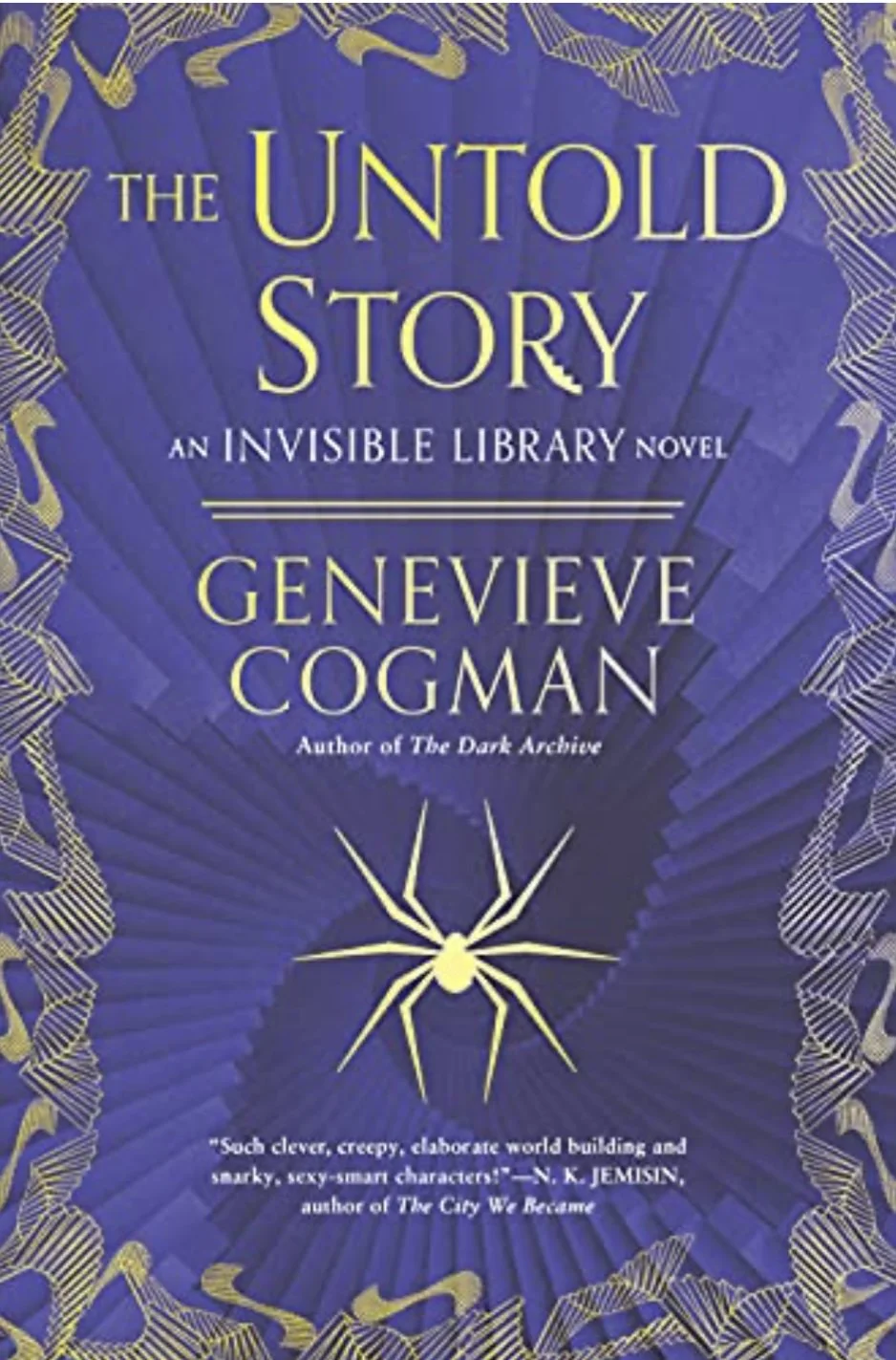Adventures In The Invisible Library
As an Amazon associate, I may earn a small commission if you navigate to Amazon from my site and buy something. This will not result in an extra cost to you.
The Invisible Library. Just those words send a little shiver of delight through me. Books! A library’s worth of books! And “invisible?” What does that mean? Is that like a secret library? Ooooo, I hope it’s a secret library. MY secret library.
“Irene had decided a while back that Socratic questioning was a good idea, because (a) it got students thinking for themselves, (b) sometimes they came up with ideas she hadn’t thought of, and (c) it gave her more time to think while they were trying to find answers.” The Invisible Library
The Invisible Library series, written by Genevieve Cogman, is a true delight. It’s difficult to quickly summarize the idea, so I’ll just start by describing the opening scene in the first of the eight books (The Invisible Library), as that very much gives a feel for how the rest of the books go. Fair warning: minor spoilers ahead.
We are introduced to Irene, a woman mopping muddy stone floors at Prince Mordred’s Private Academy for Boys, where indoor studies include “dark arts, military history, and alchemy” and outdoor studies in the mud include “strategic combat, dueling, open-field assassination, and rugby.” It quickly becomes clear that Irene is only pretending to be a drudge, for the purpose of infiltrating the Academy to steal a unique book. Irene is a Librarian, and like all Librarians in the field, her job is to go to various “alternate worlds” and acquire (beg, borrow, buy, trade, steal, whatever is required) books unique to that particular world and return them to the Library.
The world building in this series is quite clever. The Library stands in a between place, almost like a world of its own. The various worlds (called alternates, identified by the Library with an alpha-numeric code) are on a spectrum between order and chaos and constantly pulled between the two. In order to provide stability to all the worlds, the Library makes connections with these worlds by acquiring and holding unique books. It’s an interesting premise. This gives the author a potentially infinite number of worlds to explore.
“Irene hadn’t broken the letter of any ordinances—she hoped. She’d just jumped up and down on the spirit of them, then taken them down a dark alley and made some pointed suggestions at knifepoint.” The Masked City
The same is true for the other “players” in the story: the Fae and the dragons. The dragons represent order and so naturally migrate to the worlds on the more orderly end of the spectrum, where they rule in such a way as to provide stability and structure, which (mostly) benefits the humans who are the main occupants of all worlds. On the other hand, the Fae are beings of chaos, which manifests as each individual Fae choosing (or sometimes being chosen by) various archetypes that will be recognizable to any western reader. They fall into actions and patterns of behavior that are congruent with their personal archetype; you might say, they follow the narrative of their archetype’s story. And the more powerful the Fae, the more likely they are to drag humans and other Fae into their narrative, which plays out in a number of interesting ways. As dragons and Fae are as fundamentally opposed to one another as order and chaos are, they are constantly vying for control over the various alternate worlds, sometimes with devastating effects on the hapless humans living there. The Library (fundamentally a structure of order) stands neutral and stands for stability. It does not try to tip the balance in favor of either faction but simply tries to stabilize the various worlds.
Even though Cogman has many different worlds to describe and two other races apart from humans to deal with, the worlds we visit in the books are all “alternate history” versions of our own, so they don’t have to be built from scratch and are easily identifiable by the reader. So too the Fae archetypes are easily recognized by the reader; for example, the first Fae we meet, Lord Silver, has taken the archetype of seductive libertine, so we quickly know what to expect from him. This allows Cogman to spend little time “explaining” the alternate worlds and Fae motivations, and just jump right into the story. The dragons are a bit more opaque, but we do end up learning plenty about them.
“We also wish to make it absolutely clear that Librarians should not attempt to use the Library to transport dinosaur eggs. In fact, we wish to remind all Librarians that they are here to collect books, not dinosaurs. Those Librarians who have problems distinguishing between the two should take a refresher course in Library basics.” (Except from a directive from senior Librarians) The Burning Page
The books are a mixture of technology and magic, most of which is again recognizable to the average reader (Irene’s “home world” turns out to be somewhat chaotic, with a bit of a steampunk feel, complete with zeppelins). The particular magic unique to this book series is the Language, a vocabulary known to and usable by Librarians only. Irene uses the Language to alter the world around her to various degrees and with varying levels of permanence. I won’t say more about this, as discovering how this works is one of the particular pleasures of the series.
In the first book, we meet the characters who adventure alongside Irene throughout the entire series. First, Kai, who is introduced as Irene’s apprentice and indeed does fulfill that role for several books; but he is a dragon, and therefore unlikely to ultimately swear loyalty to the Library. Then we meet Peregrine Vale, London’s greatest detective, a very Sherlock Holmesian character who is a pithy delight. And we meet the main antagonist: Alberich, a Librarian who went rogue centuries earlier and began working against the Library and killing Librarians. He’s quite creepy.
The first three books (The Invisible Library, The Masked City, and The Burning Page) very much have the feel of a trilogy. There are five more books and they do all “hang together” well enough, but those first three feel like they were planned from the beginning. I was left with the impression that Cogman did not necessarily have an end point in mind in terms of overarching plot in subsequent books, at least not when she was writing the “trilogy.”
The fourth novel (The Lost Plot) is my least favorite of the eight books, although I’m not quite sure why. It’s set in a Prohibition-era America and is chock full of dragons who are central to the plot. Since I really like the dragons, this should be right in my wheel house. I still enjoyed it, just not as much as the others.
Next is The Mortal Word, which I absolutely loved. In it, we see the Library mediating a peace conference on a neutral world between the dragons and the Fae. Since the most powerful of their kind are the ones negotiating, this is quite an interesting drama as we watch the opposing factions try to come to agreement over the terms of a proposed peace treaty, while also trying to solve the murder of one of the dragon delegates.
The Secret Chapter is a departure from the other books in the series. In this story, Irene and Kai (apart from Vale, for a change) end up working with a team of mercenaries (both Fae and dragon) to steal a piece of art which is the price for a book Irene desperately needs to obtain for the Library. It’s an enjoyable heist story, and we learn some (possibly) interesting secrets about the origin of dragons. Also, the British author gets in a delightful dig about Brexit.
The Dark Archive is next, an odd book. Alberich returns, along with an old enemy from the second book (The Masked City). As I was reading this book, it felt…scattered. I can’t think of a better adjective. For one thing, the book is told from multiple points of view (Irene, Kai, Vale). And I somehow managed to buy the UK edition, which meant unfamiliar punctuation and spelling. But honestly, although I’ve read this book multiple times just like the others, I couldn’t really tell you what the plot is. “Lots of things happen” is the best I can do. But it just felt all over the place. This is probably my second least-favorite in the series.
“The Fae, creatures of chaos and narrative archetype, were almost as happy with a dramatic loss as with a dramatic victory, so long as it was entertaining.” The Untold Story
And finally, the series concludes with The Untold Story. This book both felt like it rushed along and dragged at the same time, which makes for an odd reading experience. But I did enjoy it and most of the open questions from the series were answered, so it was satisfying.
Overall, I love this series. I own all eight books, of course, and I own five of the audio books. After The Mortal Word, iTunes stopped showing “unabridged” next to the subsequent audio books and also there was a different narrator. I wasn’t positive that the books were abridged, but that was my guess and I wasn’t willing to buy one to find out if I was right. So I stopped buying the audio versions after the fifth book.
I think this series has a wide appeal, even to readers who aren’t necessarily “sci-fi” or “fantasy” readers, because it’s a fascinating treatise on the nature of books and stories, myths and archetypes, which are accessible to all. There really is something for almost everyone. If I were still in college, I’m sure I’d be droning on about Joseph Campbell and his ideas about the monomyth, but this series really does embrace the theory, I feel. Bibliophiles like myself will certainly find it relatable. I highly recommend it. Give it a try!







